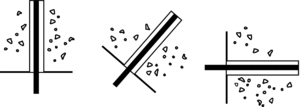
There are radical changes in the works for the concrete design standard of the American Concrete Institute. ACI committee members are about halfway through a six-year overhaul of the 502-page tome, aiming to validate its content and make it more user-friendly. It is the first major revamp in nearly 45 years.
In a big departure, the 2014 edition of the ACI 318: Structural Concrete Building Code, referenced by the International Building Code (IBC), is organized around structural members, such as columns and beams, rather than behavior, such as flexure or shear. All relevant member information, including direction to other chapters when appropriate, is in one place. Currently, requirements are scattered.
The changes will make the book easier to use, said Randall W. Poston, ACI's structural-concrete building-code committee chairman, at ACI's fall 2011 convention, held on Oct. 16-20 in Cincinnati.
In addition to the overhaul, ACI committees are scrutinizing the standard to make sure its provisions are valid. “The task is almost Herculean, taking an inordinate amount of the volunteers' time,” said Poston, a principal of structural engineer WDP & Associates, Austin.
The revised standard will contain administrative and “tool box” chapters offering fundamental information useful to all members. These chapters will be followed by the member chapters: one-way slabs, two-way slabs, beams, columns, walls, foundations, joint and connections, discontinuity regions and anchoring to concrete. There will be a separate chapter on earthquake-resistant structures, followed by several chapters on material quality control and assurance and construction requirements. Speciaty items will get their own chapters. For the first time, the standard will contain a chapter on performance requirements for structural members and systems. Details are available at www.concrete.org.
Work began on ACI 318-14 in 2008. Originally, there was a push to complete the standard by 2013, to meet the International Code Council's cycle for the IBC's 2015 edition. But ACI decided to publish its standard in 2014 rather than rush it to completion. “We may offer some additions for IBC 2015 but will not have ACI 318-14 done,” said Poston.
ACI just released ACI 318-11 in August. The changes were minor, Poston said, with one exception: A section on adhesive anchors was added to Appendix D, which covers post-installed anchors. Anchors are inserted in a hole drilled horizontally or in any orientation above horizontal—mostly in walls and ceilings.
The National Transportation Safety Board's findings on Boston's “Big Dig” adhesive-anchor failure were largely responsible for identifying the need for the actions that ACI took in the development of the adhesive-anchor design guidelines, installer certification and a product qualification standard, said Catherine French, a civil engineering professor at the University of Minnesota, Minneapolis, who chaired the ACI subcommittee on adhesive-anchor requirements.
The standard requires installer certification and inspection. “[The program was] an absolute must for inclusion of the provisions in ACI 318,” French said.
“It was very controversial to do this because the quality of the installation was going to be dependent on the installer,” added Poston.




Post a comment to this article
Report Abusive Comment